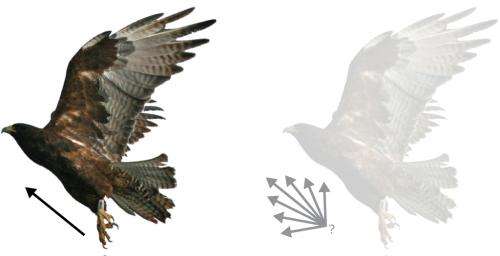Figure 1: Humans have the ability to accurately estimate the speed of moving objects under good light conditions, such as a bird on a clear day (left). On a cloudy day (right), however, the sensory information may be more ambiguous and invokes a specific cognitive mechanism—perceptual bias—that is hardwired into the visual cortex. Credit: Justin Gardner, RIKEN Brain Science Institute
When viewing a scene with low contrast, such as in cloudy or low-light situations, humans tend to perceive objects to be moving slower or flickering faster than in reality. This less-than-faithful interpretation of the sensory environment is known as perceptual bias and is thought to be a mechanism that can help humans interpret vague motion information. Brett Vintch and Justin Gardner from the Laboratory for Human Systems Neuroscience at the RIKEN Brain Science Institute have now shown that perceptual bias is encoded within the visual cortex—the region of the brain where visual stimuli first arrive and begin to be processed.
Although humans have the ability to estimate the speed of easily visible, high-contrast stimuli quite accurately, the speed of less-visible, low-contrast stimuli is harder to judge and is invariably underestimated. Speed perception is thought to be closely associated with the middle temporal zone of the visual cortex, but measurements have so far been unable to confirm this link.
Vintch and Gardner set out to resolve the link between cortical response and perception by conducting functional magnetic resonance imaging experiments on test subjects exposed to a series of low- and high-contrast images either moving across the screen at different speeds or flickering at different rates.
The researchers found that different speeds of motion in visual stimulus evoked different patterns of activity in the visual cortex. So systematic was the observed pattern of activity that Vintch and Gardner were able to predict the motion speed or flicker frequency of what the observer was viewing simply by examining the measured brain responses. Using these predictions, they found that when the test subjects viewed scenes with low contrast, the patterns of activity shifted to match what the observer was perceiving rather than what was actually physically present.
The findings indicate that human perceptual bias about the movement of low-contrast stimuli originates from a shift in the response of neuronal populations in the parts of the brain that first start to process images. This early visual processing, which is hardwired into the visual cortex, may help humans make sense of ambiguous or vague visual information, such as moving or flickering scenes under low-contrast conditions (Fig. 1).
"Multiple aspects of human thought, such as sensory inference, language, cognition and reasoning, involve cognitive guesswork. We hope that our study of this very simple form of guessing by the nervous system will have implications for other high-level processes in the human brain," explains Gardner.
More information: Vintch, B. & Gardner, J. L. "Cortical correlates of human motion perception biases." The Journal of Neuroscience 34, 2592–2604 (2014) DOI: 10.1523/JNEUROSCI.2809-13.2014
Journal information: Journal of Neuroscience
Provided by RIKEN






















